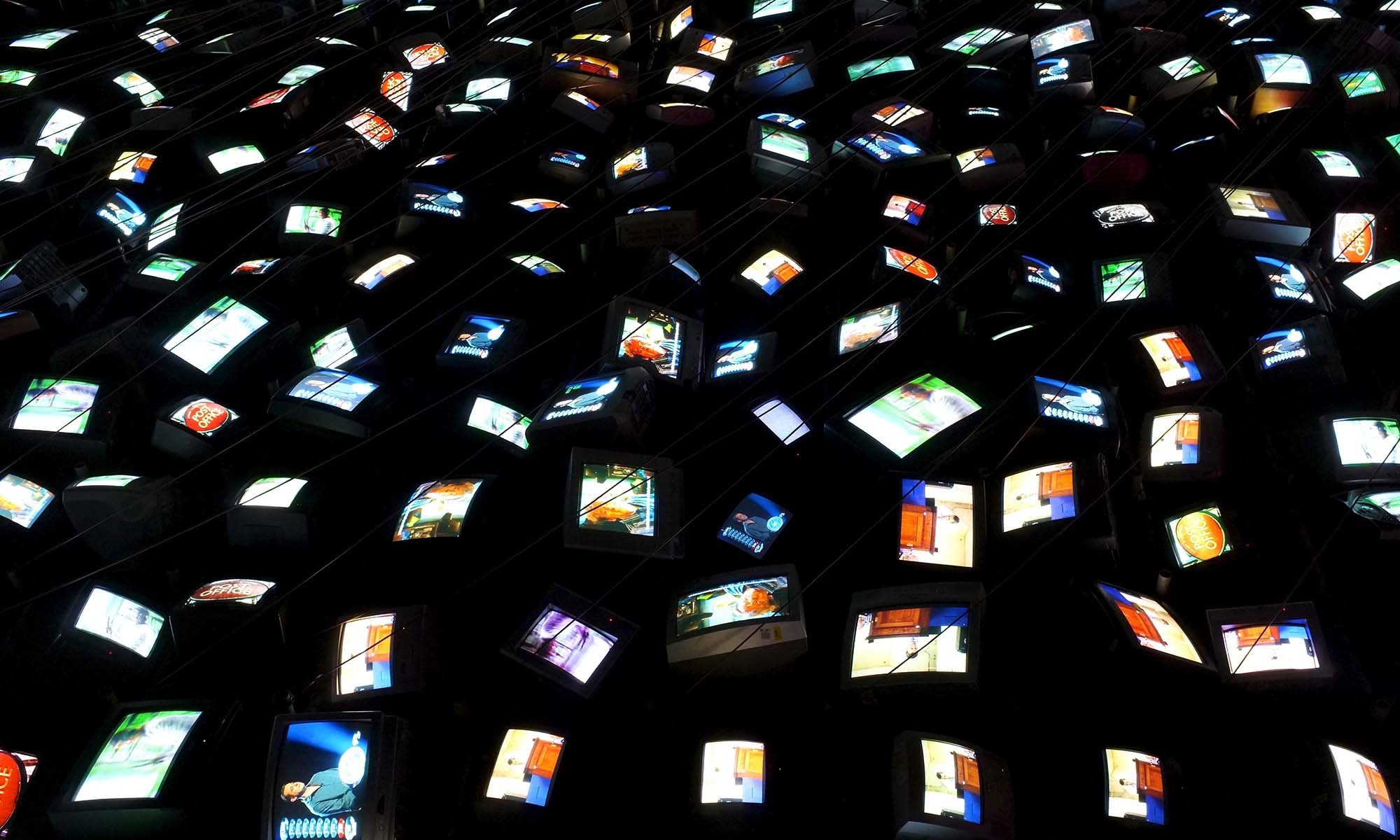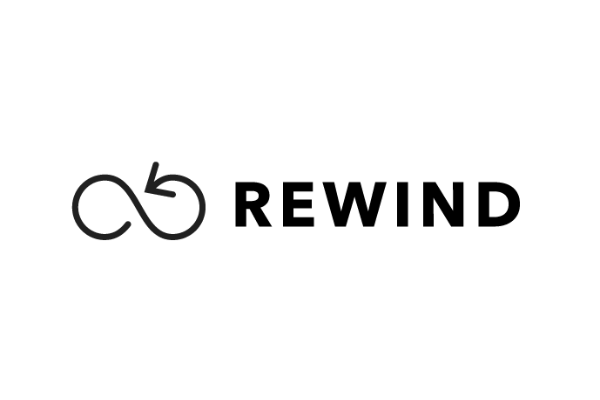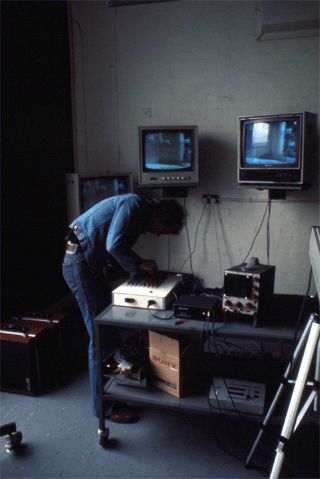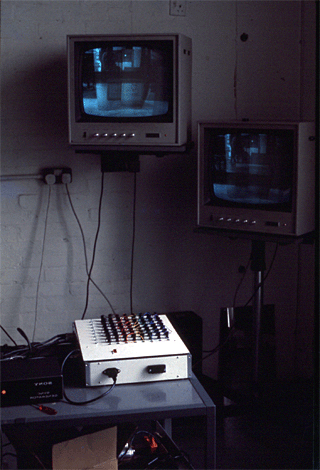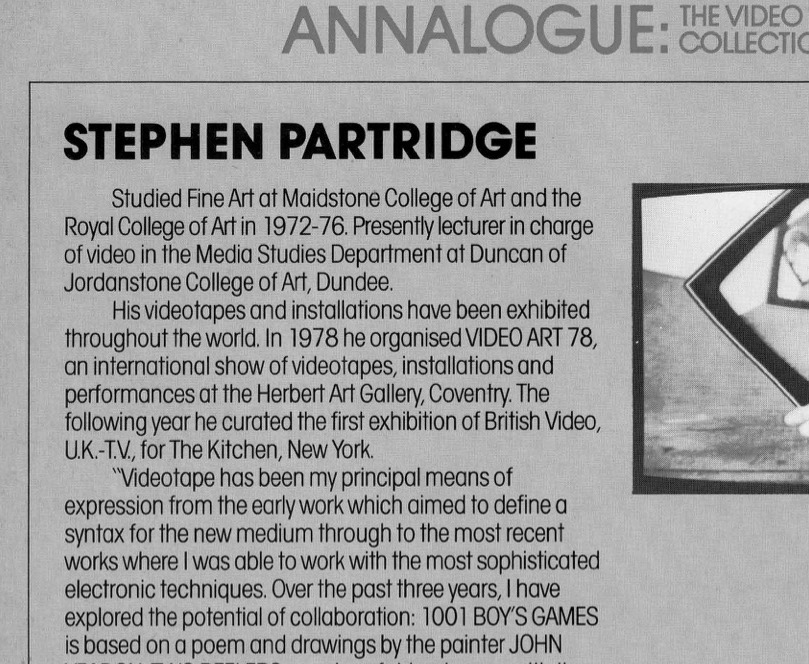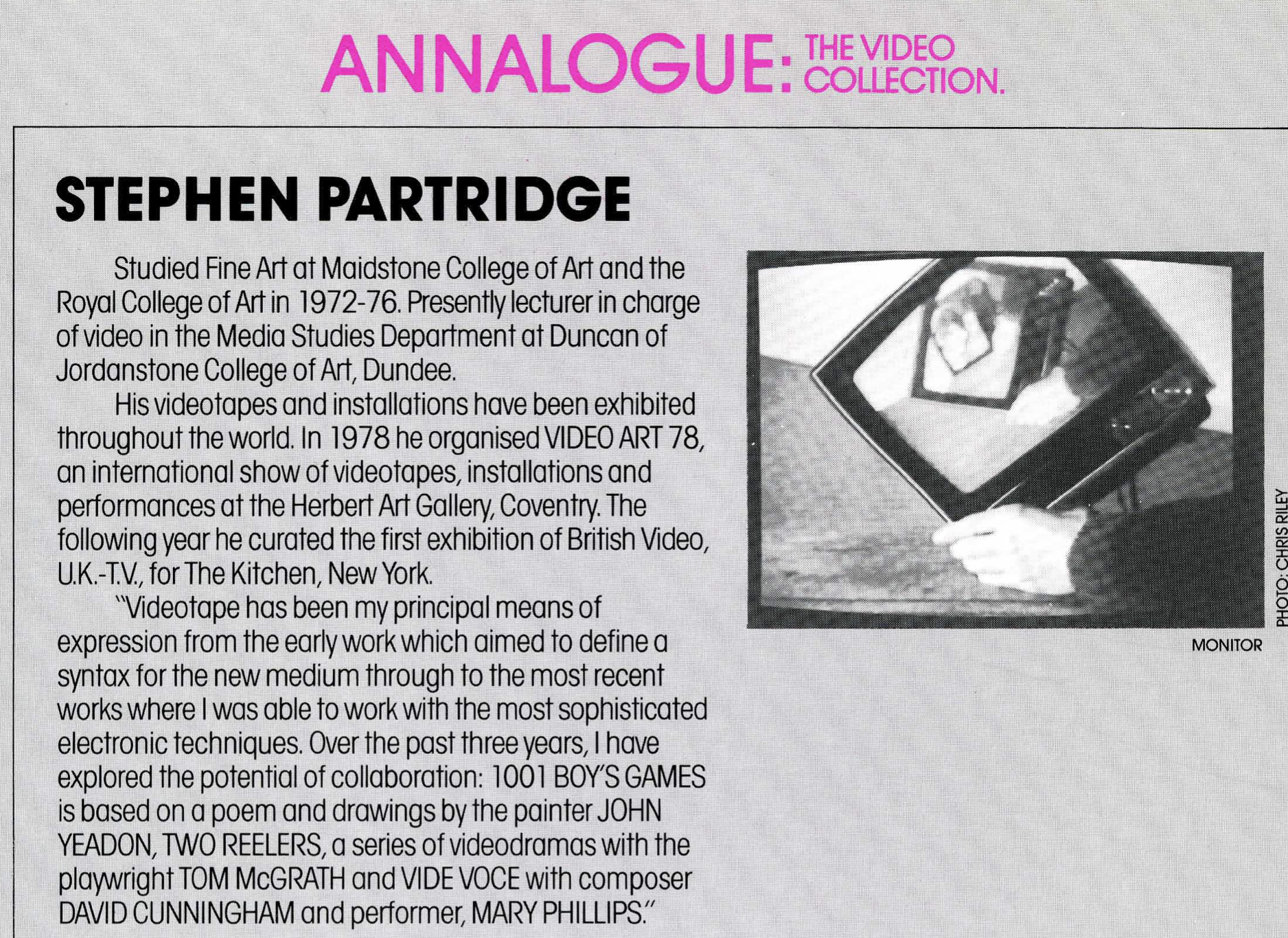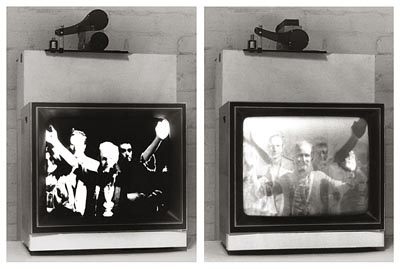8 x 8 x 8 (1975)
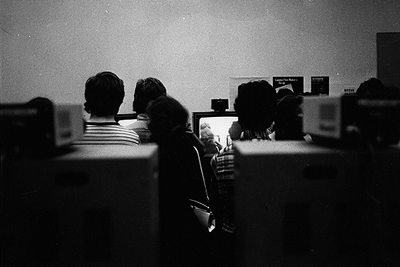
Creator:
Partridge, StephenContributor(s):
-
Howard Vie, technician at the RCA's dept of Environmental Media bulit the AVS (Automatic Video Switcher) which could be programmed by slide tape audio command technolgy to switch between 8 camera sources to 8 Video outputs in a programmable 84 way matrix.
-
Duration: Indefinite
Year: 1975
Media types:Video
Type of work:Closed Circuit Televison
Funding source: Royal College of Art
First exhibited: Video Show, Tate Gallery, London 1976
“There is a characteristic of video which is peculiar to itself: camera switching. The importance of mixing/switching seems to have been overlooked in most analysis of video aesthetics; the dialogue mainly being concerned with the difference between the film frame and the video field. Using an electronic switcher/mixer it is possible to switch from camera to camera, and produce dissolves, wipes and fades all in ‘real-time’, whilst the same effects in film cannot be achieved without an interruption in time.
The videotronic switcher then, allows the artist to “intervene strategically in an on-going process”. Closed circuit installations can be set up manipulating this quality of the medium to produce temporal and spatial juxtapositions involving the audience as both spectator and subject.
Over the past six months I have been concentrating on this rather sculptural aspect of video rather than using video tape, and have designed an Automatic Video Switcher (AVS) along with Howard View, which we have been making since January at the Environmental Media department of the Royal College of Art, and the work can be seen at the Tate this month as part of my installation.
The AVS has eight inputs and outputs and is programmed by control pulses which are recorded on sound-tape and subsequently decoded by a multiplex encoder/decoder and fed to trhe switcher. More than one input (ie camera ) can be selected and the interval between switches can be any length of time. There is a matrix between the inputs and the outputs so that any camera can be programmed to feed any monitor or number of monitors at any given time.
Through the AVS time and space can be altered within a structural and programmed format. A camera’s view (ie its space) may move around, from monitor to monitor – the larger space within which the installation exists.”
Stephen Partridge, Artist’s statement for Studio International May/June 1976
“This exhibition was curated by the exhibition department of the Tate Gallery rather than the main gallery team who had not yet, recognized video as a ‘legitimate’ medium. They used their lecture theatre spaces -which although not ideal, served the purpose and gave exposure to the public for what was – at the time- a very new experience. Interestingly a PhD student was undertaking some research on audience participation at the time and asked if he could incorporate the Video Show in his project. His results showed that the average time spent looking at a painting or sculpture was 3-4 seconds but with the video show it was 3-4 minutes – unless the viewer was a practicing artist – in which case it was 0-2 seconds or, in other words – video – no way!
My piece 8x8x8 was in many ways, pretty straightforward, using live video camera feeds to confront the audience with their own real time image – although it was a 3/4 view of the back and side of their head. I had devised a video switcher ( the AVS) , which was built for me by one of the engineers at the Royal College of Art (where I was, for a short time, a student). This allowed programming of the output of the switcher to the monitors. I programmed it to anticipate the reaction of a person confronted by the view of the back and side of their head, which I correctly anticipated would mean they would turn to se if they could see their face, a sensor would pick up on this and speed up the process of switching so that they were frustrated. It was interaction – of a particularly controlling kind!” Stephen Partridge
Information on the installation 8x8x8, for the Video Show, Tate Gallery, London, 1976. Document written by S.Partridge, May 1976.pdf here
-
